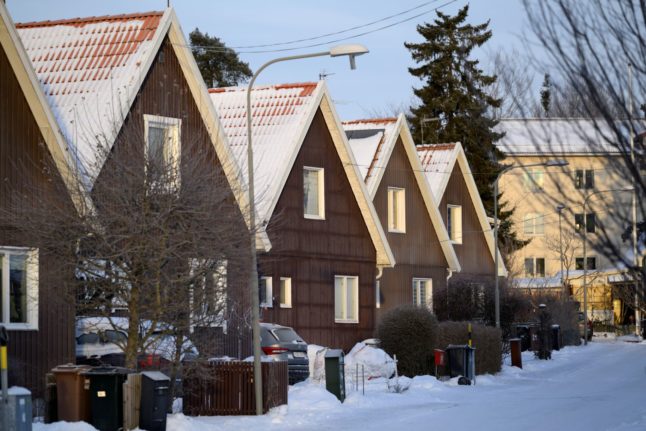Essentially, when you take out a loan in Sweden, the government gives you a discount on the interest you pay, in the form of a tax rebate.
This doesn’t include interest paid on all types of loans – for example, student loans are not included – but it does include your mortgage.
In order to qualify for the discount, referred to as ränteavdrag (interest deduction) or skatteavdrag (tax deduction), you need to fulfil some requirements:
- You’ve paid income tax and at least 1,000 kronor in interest in the last taxation year
- You have a capital deficit (meaning that your interest costs must be greater than any capital income you’ve earned through interest or dividends)
- You are either partly or wholly responsible for the loan or mortgage in question
If there are two of you who are both named on the mortgage who fulfil these requirements, you’ll each receive 50 percent of the total tax rebate.
The interest deduction is automatically subtracted from your yearly tax and listed in your yearly declaration, if you fulfil the requirements, meaning you’re likely to get it back as a lump sum when tax season rolls around in April.
How much do I get?
The actual sum you get back varies depending on how much tax and interest you’ve paid during the year, but there are some general calculations which can give you a guideline of what you might get.
You’ll get 30 percent of your interest costs back on the first 100,000 kronor you pay in interest over a year, and 21 percent on anything over 100,000 kronor.
If there are two of you, you each have your own individual tax deduction, even if you’re paying the same loan, so as a pair you’ll get back 30 percent on the first 200,000 kronor, as well as 21 percent on anything over this figure.
To figure out how much you’ll get, you need to first find out how much interest you’ve paid during the year your declaration covers and subtract this figure from your capital income earned through interest or dividends.
If your figure is negative, that means you can subtract this figure from your tax paid during the year. Bear in mind that if you owe tax, then your interest deduction amount will be used to pay it back first, lowering the total amount you receive.
You can also change the proportion of the deduction applied to each partner if you share a mortgage, dividing it 60/40 or 70/30, for example, if you don’t share the mortgage 50/50. You can do this through your bank or by manually changing the figures in your tax declaration.
I don’t understand. How does this make my monthly mortgage payments cheaper?
Here’s where something called skattejämkning comes in. This literally translates as “tax equalisation”, and it’s a way you can spread your tax rebate for interest costs out over a year, lowering your mortgage costs each month rather than of getting a lump sum in the form of a tax rebate during tax declaration season.
In order to equalise your tax, you’ll need to contact the Tax Agency directly, filling out a form with the catchy title of SKV 4302 – Jämkning (ändring av preliminär A-skatt) or using their Jämkning online service.
To do this, you’ll need to have in-depth figures on things like your salary, pension payments, sick pay and any other income like unemployment benefit or maternity or paternity payments, as well as capital income and any business income for the tax year you’re applying for, as well as your expected income for the rest of the year.
If your application is accepted, the Tax Agency will tell your employer to subtract less tax from your payslip each month, effectively meaning that you get your tax rebate for interest costs back in your monthly pay instead of getting it paid out all at once.
Bear in mind that if you do go down this route it’s important that your calculations are correct. If you accidentally overestimate your interest payments or underestimate your tax owed, you could end up being hit with a hefty tax bill once your declaration comes through.



 Please whitelist us to continue reading.
Please whitelist us to continue reading.
Member comments